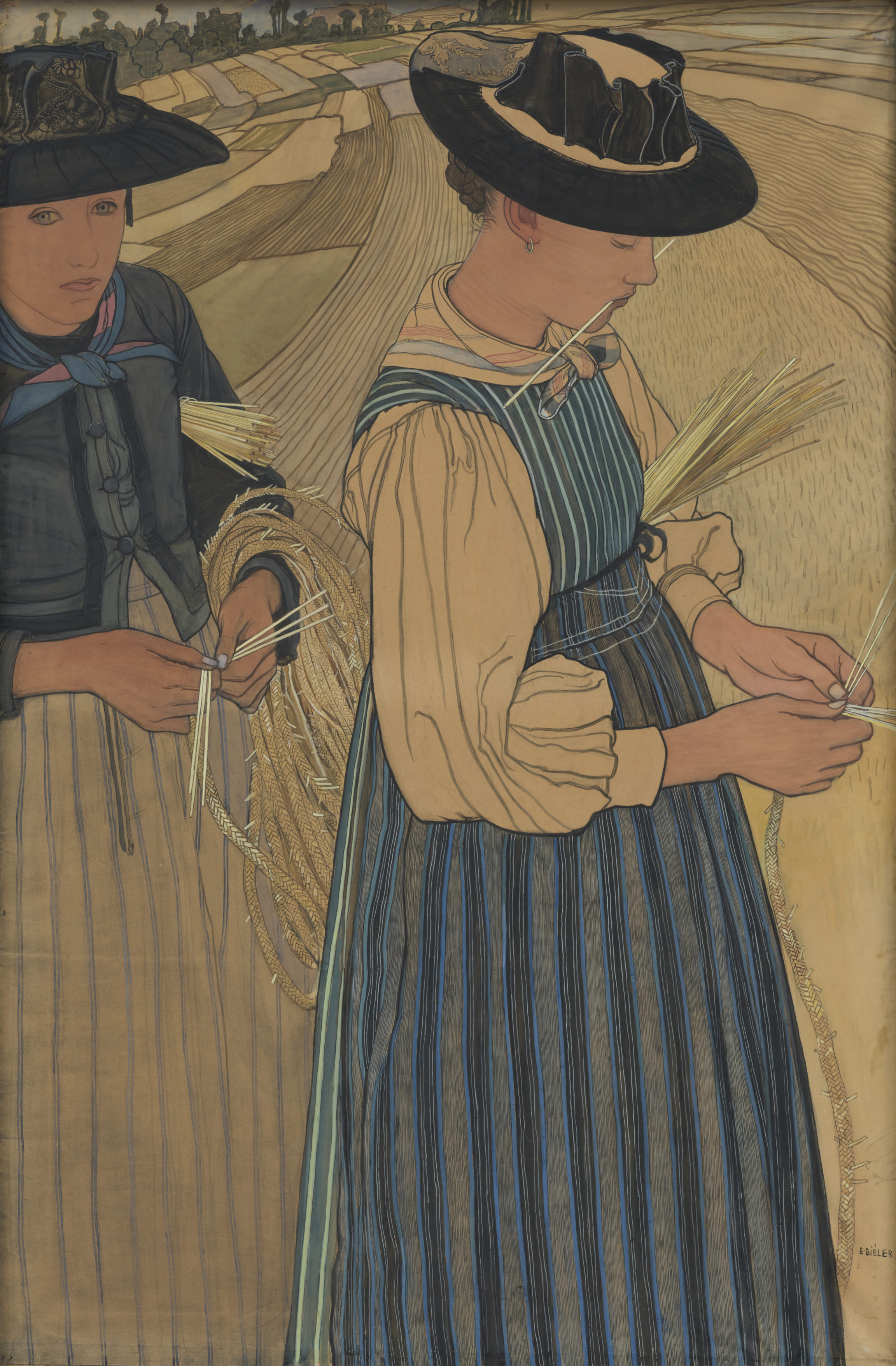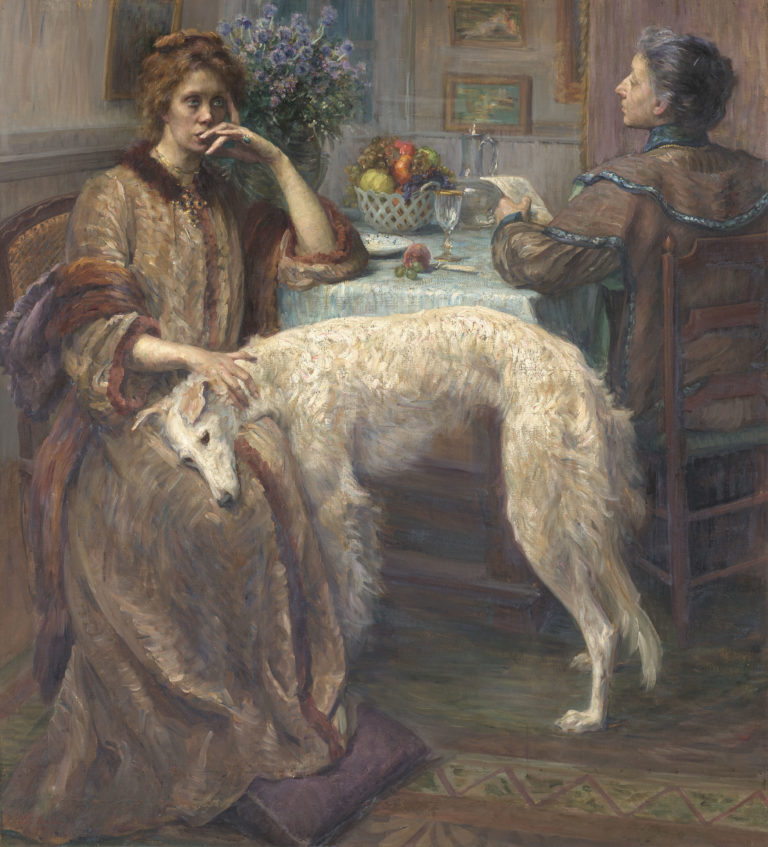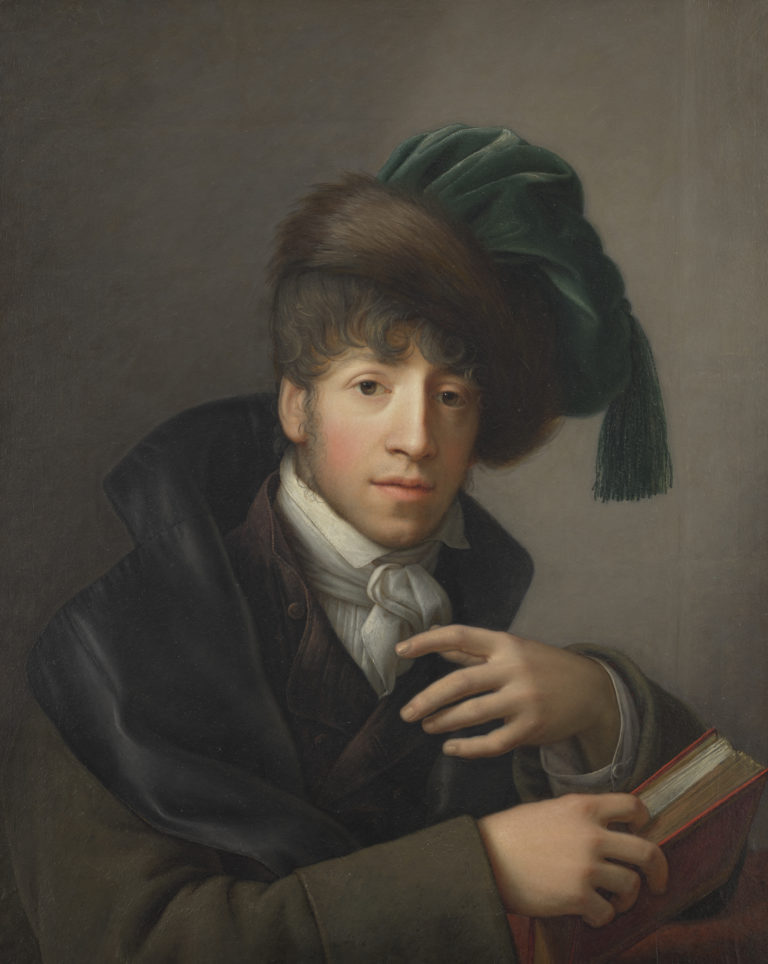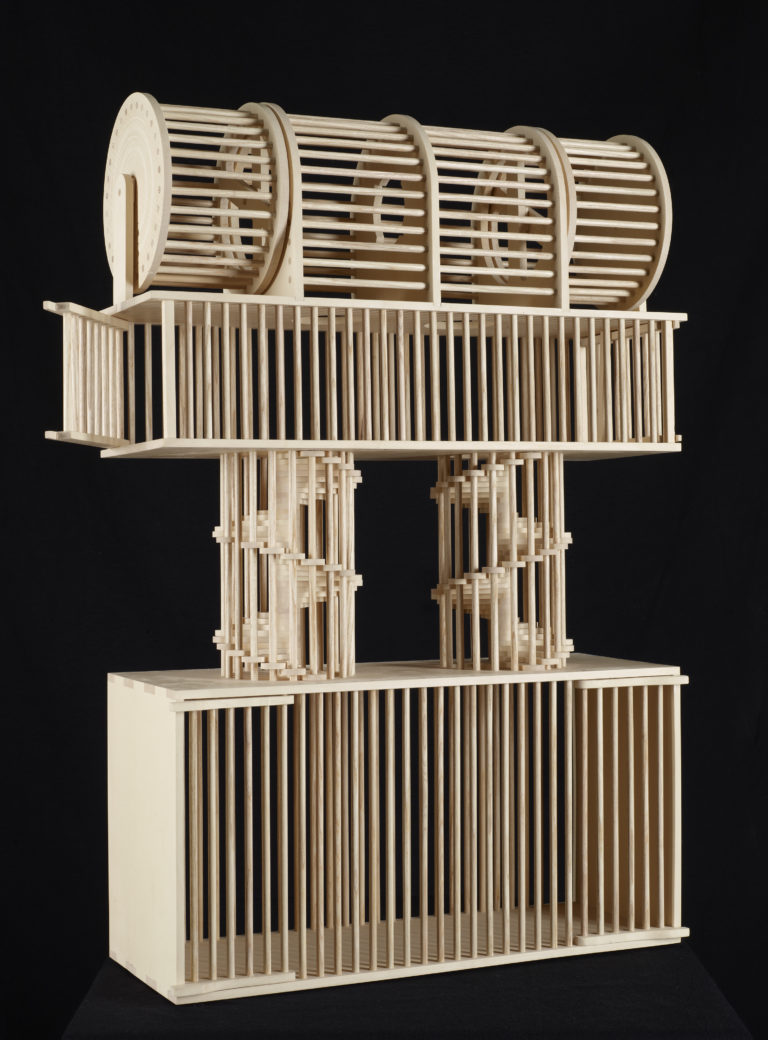Bibliography
Ethel Mathier (ed.), Ernest Biéler. Geträumte Wirklichkeit / Réalité rêvée, exh. cat. Bern, Musée des beaux-arts, Fondation Pierre Gianadda, Martigny, 2011.
Elizabeth Fischer and Catherine Lepdor (eds.), Modes et tableaux. Œuvres de la collection et costumes de 1700 aux années folles, Les Cahiers du Musée des Beaux-Arts de Lausanne, 2000: n. 10.
Jörg Zutter and Catherine Lepdor (eds.), Ernest Biéler (1863-1948). Du réalisme à l’art nouveau, exh. cat. Lausanne, Musée cantonal des Beaux-Arts, Solothurn, Kunstmuseum, Milan, Skira, 1999: 59.




Vaud-born Ernest Biéler first visited the Valais village of Savièse in 1884, moving there to settle in 1900. From 1906 on, he became involved in Art Nouveau circles, developing a new style he called “graphism”. He dropped chiaroscuro and formation, focusing rather on outlines and laying out juxtaposed flat surfaces. The pale colours were couched in broad swathes. The medium was distemper, watercolour and gouache on paper, chosen for their matte effect.
This work captures two young village women at work, their fingers entwined in the straw, a stalk clenched between their teeth. Country women often wove straw ribbons for the millinery trade to earn extra income. Here they are shown wearing their everyday garb. Their aprons are tied high up their backs over sleeveless dresses and white linen blouses. They also wear scarves around their necks and traditional headgear, with velvet-trimmed brims and ribbon decoration round the crown.
Biéler found himself drawn to the “naturally and traditionally” decorative traditional costume, so different from the sombre outfits worn by the middle classes. Though one woman is gazing at the painter, suggesting a fleeting moment, their faces are devoid of realism and therefore individuality. Biéler’s weavers seem to be posing merely as a pretext for an encounter between the parallel lines of their aprons and the sinuous curves of the sun-drenched landscape.